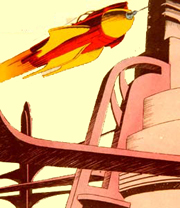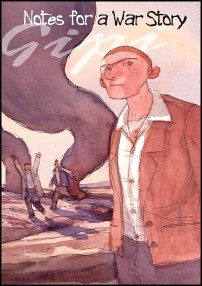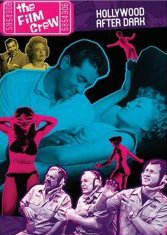OMNIBUS REVIEW: Giant-Size Steve Ditko
 As we await Jonathan Ross’s BBC4 documentary “In Search Of Steve Ditko," I suggest reading Marvel’s Amazing Fantasy Omnibus; it’s one swell way to pass the time.
As we await Jonathan Ross’s BBC4 documentary “In Search Of Steve Ditko," I suggest reading Marvel’s Amazing Fantasy Omnibus; it’s one swell way to pass the time.
Sure, Ditko will be remembered forever as the creator and co-creator of Spider-Man, Doctor Strange, and maybe The Creeper and Shade the Changing Man. Jonathan’s documentary will help cement his role as comics’ most famous recluse, and many will continue to regard Steve as a man of principle, even if some disagree with that principle. The Amazing Fantasy Omnibus shows us what the man was up to the day before he co-created the Web-slinger.
In a sense, this hefty (416 page) tome is oddly named. It reprints the entire 15-issue run of… well, a book that was always titled “Amazing” and usually titled “Fantasy,” but was only once called Amazing Fantasy. And that was its last issue. The one that introduced Spider-Man.
Originally titled Amazing Adventures, the book was little more than an addition to Marvel’s dominant monster and mystery line – Tales to Astonish, Journey Into Mystery, Strange Tales, and Tales of Suspense. And like its sister titles, Amazing Adventures offered the efforts of writer/editor Stan Lee and artists Don Heck, Jack Kirby (inked by Dick Ayers) and Paul Reinman – on a series called Doctor Droom, no less. But with issue #7, the book morphed into Amazing ADULT Fantasy (emphasis mine) and it became pure Stan Lee and Steve Ditko. And it became magic.
A month earlier, I would not deign to pick up what we now call a Marvel comic book. I had just turned 11 and I didn’t care for monsters and mystery – at the time – and Patsy and Hedy didn’t do much for me either. At the time. But at the end of August in 1961 out of sheer boredom I picked up the first issue of a superhero-looking book called Fantastic Four, so I was open to their efforts.
But the title confused me. “Amazing ADULT Fantasy”? Would kindly Pharmacist Herman Orlove even sell this comic book to me? It said “The Magazine That Respects Your Intelligence” right there on the cover. Well, I was intelligent. Intelligent enough to hide the issue in the middle of my stack of comics, each and every one priced at 10 cents. Orlove never knew, and my place on his junior league baseball team remained safe.
The art … staggered me. I had seen nothing like Steve Ditko. It wasn’t good, in the sense that Kirby was larger than life and Curt Swan was life itself. But it was perfectly suited for the creepy stories in this comic book. I couldn’t explain it, and I still can’t. But I learned the lesson.


 Okay, I’ll get this over with real fast. Sci-Fi Channel’s new Flash Gordon show really sucks. I sat through the 90-minute pilot, and I sat through the next episode. No more. Life is too short.
Okay, I’ll get this over with real fast. Sci-Fi Channel’s new Flash Gordon show really sucks. I sat through the 90-minute pilot, and I sat through the next episode. No more. Life is too short. First, the consumer report:
First, the consumer report: 


 Okay, I admit it. I’m still a fan of [[[Mystery Science Theater 3000]]], the long-running teevee series that featured four robots and a loser riffing on a couple hundred B-flicks… if you’re feeling particularly generous about that “B” part. Michael J. Nelson, Bill Corbett and Kevin Murphy were among the show’s writers and producers. They were also performers – Corbett with the eighth season, Murphy with second season. Nelson, who was head writer from the start, played odd parts for the first four seasons and took over the lead when creator Joel Hodgson left the show at the beginning of season five. The show ran from 1988 through 1999 and begat a feature film.
Okay, I admit it. I’m still a fan of [[[Mystery Science Theater 3000]]], the long-running teevee series that featured four robots and a loser riffing on a couple hundred B-flicks… if you’re feeling particularly generous about that “B” part. Michael J. Nelson, Bill Corbett and Kevin Murphy were among the show’s writers and producers. They were also performers – Corbett with the eighth season, Murphy with second season. Nelson, who was head writer from the start, played odd parts for the first four seasons and took over the lead when creator Joel Hodgson left the show at the beginning of season five. The show ran from 1988 through 1999 and begat a feature film. Shannon Wheeler (no relation, as far as I know) is, of course, the creator of
Shannon Wheeler (no relation, as far as I know) is, of course, the creator of 










